
tires are a very important part of our car and are part of active safety. It is the only element that is in contact with the asphalt, so it is advisable to know them well to know which tires are compatible with our car. If the correct ones are not used, it is difficult to will pass the ITV and you can even have serious mishaps
Today, we are going to talk to you about what a tire is like, the acronyms or codes that appear in it And what does each of them mean? There are a large number of tire brands and models on the market, but they have a number of elements in common that will make it easier for us to know which model corresponds to our car.
First of all, it is necessary to know the tire that corresponds to our car. We can easily see this in the documentation, where it indicates the tire measurements (equivalent tires can also be mounted). E.g., a measure that many vehicles equip is 205 / 55 R16 88H.
Tire speed codes

Example: 205/55 R16 88H
We start with the tire speed code, H in our example. This letter indicates the maximum speed the tire can withstand. In this case, H corresponds to 210 km/h. For example T, would be 190 km/h and the letter V up to 240 km/h. Although in Spain it is not possible to circulate at more than 120 km/h, we must put tires with the speed code indicated by the manufacturer or higher than this.
In the following table you can see a speed index of 300 km/h, but there are cars with top speeds that exceed their resistance. You just have to see the five fastest cars in the world, to see that you can go much further. That's why tire brands like Michelin take time developing tires capable of withstanding much higher speeds.
| speed index | km / h | speed index | km / h | speed index | km / h |
|---|---|---|---|---|---|
| A1 | 5 | D | 65 | Q | 160 |
| A2 | 10 | E | 70 | R | 170 |
| A3 | 15 | F | 80 | S | 180 |
| A4 | 20 | G | 90 | T | 190 |
| A5 | 25 | J | 100 | U | 200 |
| A6 | 30 | K | 110 | H | 210 |
| A7 | 35 | L | 120 | V | 240 |
| A8 | 40 | M | 130 | ZR | > 240 |
| B | 50 | N | 140 | W | 270 |
| C | 60 | P | 150 | Y | 300 |
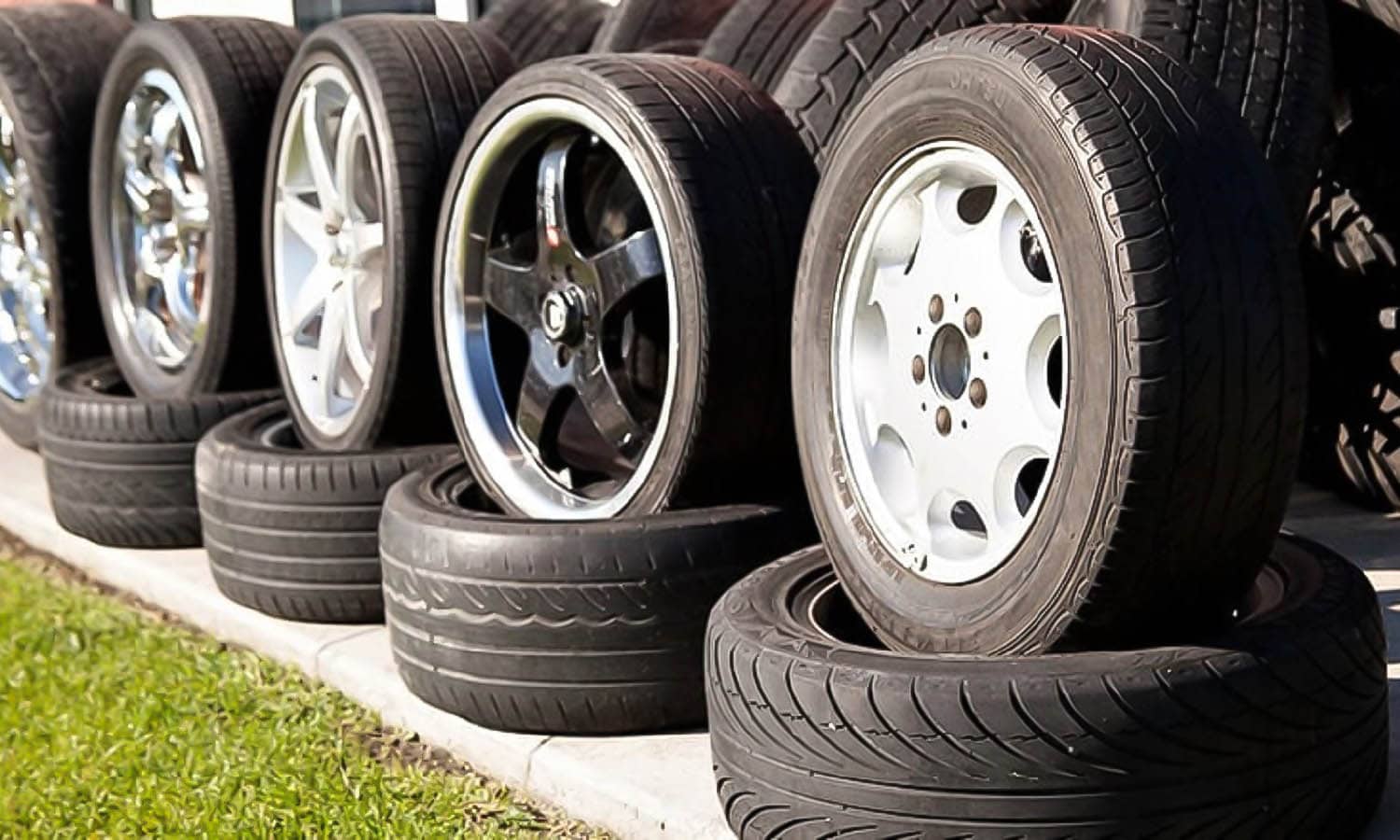
Tire Load Index

Example: 205 / 55 R16 88H
This number tells us the weight each tire can support, according to the table below. The 88 in our example means that it can hold up to 560 kg. In the documentation of the vehicle usually comes the one that corresponds to our car and you can never put a lower load index. However, if they can be put with a higher index. Although, if it is much higher, they will usually have to be inflated with more pressure, so that it takes the proper shape. If you do, consult a professional to do it correctly.
| load index | Kg | load index | Kg | load index | Kg |
|---|---|---|---|---|---|
| 65 | 290 | 80 | 450 | 95 | 690 |
| 66 | 300 | 81 | 462 | 96 | 710 |
| 67 | 307 | 82 | 475 | 97 | 730 |
| 68 | 315 | 83 | 487 | 98 | 750 |
| 69 | 325 | 84 | 500 | 99 | 775 |
| 70 | 335 | 85 | 515 | 100 | 800 |
| 71 | 345 | 86 | 530 | 101 | 825 |
| 72 | 355 | 87 | 545 | 102 | 850 |
| 73 | 365 | 88 | 560 | 103 | 875 |
| 74 | 375 | 89 | 580 | 104 | 900 |
| 75 | 387 | 90 | 600 | 105 | 925 |
| 76 | 400 | 91 | 615 | 106 | 950 |
| 77 | 412 | 92 | 630 | 107 | 975 |
| 78 | 425 | 93 | 650 | 108 | 1000 |
| 79 | 437 | 94 | 670 |
That the tire has a high load index, does not mean that it will support all that weight as it is. If you are going to fill the car to the brim, you must increase the pressure of the tires so that they support it well, otherwise you can have a blowout. Below we detail everything about tire pressure so you can make it perfect.
Rim diameter

Example: 205/55 R16 88H
We now have R16, which corresponds to the rim diameter with radial structure (R). Unlike the rest of the measurements, it is expressed in inches. Some 16-inch wheels have a diameter of 406,4 mm.
You may meet tires with code ZR (like the one in the photo), instead of just an R. This means that it is a sport tire for higher speeds. Until 1990, manufacturers used the ZR designation to refer to tires capable of exceeding 240 km/h. There are still brands that continue to use it even though it is no longer necessary, because of the speed index indicated with letters that comes at the end. The photo above is an example of this with a ZR23 on the tires of an Audi Q8 RS.
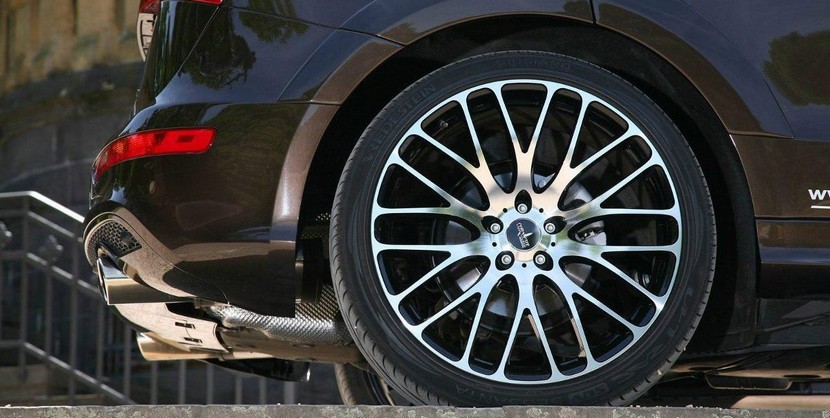
tire profile

Example: 205 /55 R16 88H
On the other hand we have 55, which is the relationship between the height of the tire (distance between tread and rim) and its width expressed as a percentage. In this case, it means that it is 55% of 205 mm, or what is the same: 112,75 mm of profile. Sports tires usually have a much lower profile, for example Michelin Pilot Sport 4S 245/30 R20 90 Y. Their profile is 30% of 245 mm, that is, only 73,5 mm.
tire width
Example: 205/ 55 R16 88H
The tire size must be indicated on the tire itself. In the example above, 205 corresponds to the tire width expressed in millimeters. Not all cars have the same width of tires on the front axle as they do on the rear. For example, a 250 Lexus IS 2006 is 225 wide at the front and 245 wide at the rear.
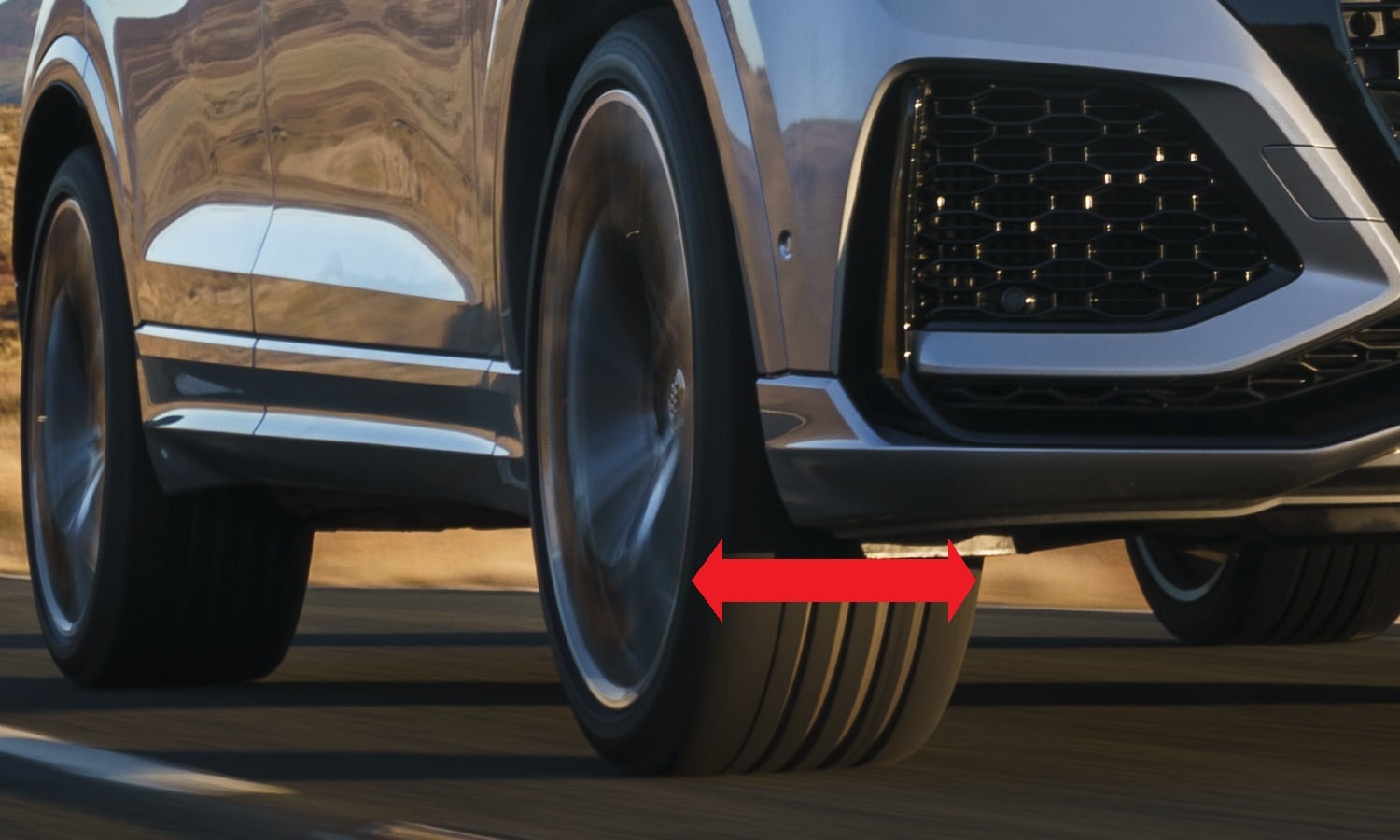
tire pressure
In the profile of your tires you will also find the maximum pressure that the tires can hold. Normally indicated in Kilopascals (kPa) or Pounds per square inch (PSI). As normally in Spain it is measured in Bars (that's how it is in gas stations), you should know that the equivalences are:
- 1 kPa > 0,01 Bar. Real example: 350 kPa > 3,5 bar
- 1 PSI > 0,069 Bar. Real example: 51 PSI > 3,5 bar
The perfect pressure to circulate with your wheels does not come on the side of the tire, because depends traditional car features. Because of that, you will find it on a sticker which is normally located at:
- the driver's door b-pillar,
- inside of fuel cap or
- the vehicle user manual.
Keep in mind that the pressures indicated are cold (about 20º) and that in addition there are many circumstances in which it is convenient to modify these values. In the next video you can see how to adjust the pressure perfectly in any situation:
Tire manufacturing date
It is indicated by a four digit number, for example: 1518. The first two indicate the week and the last two the year, in such a way that in this example it means: "week number 15 of 2018". Said in a more natural way: the week of April 9 to 15, 2018.
You will recognize it because accompanies a series of codes beginning with the acronym DOT (Department of Transportation). You should look at it when you go to get new wheels. This will prevent you from getting an old tire.

Tire expiration date
There is no exact expiration date on tires, like there is on food or other products. What there is is a number of years in which it is advisable to change them and some notions that will help you recognize if they are wrong.
Tires lose more or less properties depending on where they are stored. Changes in temperature and exposure to the elements reduce its life somewhat. Something that happens when the car is not stored in a garage. Therefore the tires last between 6 and 10 years, until they lose their properties.
If you see that tires crack (photo above), is an unequivocal sign that they must be changed. Although it is much better not to go to these extremes if you want to drive safely. The following video explains in detail:
So that they do not crack before their time, it is better that you do not use abrasive products with tires. The most perfectionistic use a tire specific cleaner, which does not harm them at all. And if you already want to curl the curl, you can also use a tire shine, which also has a moisturizing effect and promotes its preservation.
If you see that your tires are in poor condition, you should change them immediately. The cracking indicates that it will not grip as well and that it will not withstand the same stress. For example, they are much more vulnerable to "bites."
If that is your case, change the wheel for the spare even if you don't lose pressure. In the following video you can see how they are changed easily and safely:
As you can see, it is about having clear concepts such as tighten the "star" screws for the wheel to seat properly. In addition to tricks such as how to place the cat to get it right the first time. Always with all the security measures such as vests and triangles if you have no choice but to be near the road.
M+S and 3PMSF tires
If the tires bear the symbol 3PMSF and/or the letters M + S, means that they are winter tires suitable for snow. Now the symbol 3PMSF is greater guarantee of the behavior of winter tires, because to obtain it has to pass certain tests. You will recognize it because it is a snowflake inside a three peaked mountain. Hence the acronym 3PMSF, which stands for 3 Peak Mountain Snow Flake, which literally means 3 Peak Mountain Snowflake in Spanish.

The letters M + S mean Mud and Snow, mud and snow in Spanish. However, it is just a code that does not require tests to prove its capabilities. So it is only used at the discretion of the brand to differentiate them from summer tires. Whenever you see the 3PMSF symbol it will be accompanied by M+S, but not necessarily the other way around.
Radial
This word refers to the fact that it is a radial type tire. That is, a tire that has some internal bands formed by cables, which cross it perpendicular to the vehicle direction. This gives them more strength, less warping and less rolling resistance.
Most, if not all, car tires are of this type. Although they normally also include diagonal cable bands to increase their resistance and ensure their integrity in any circumstance.

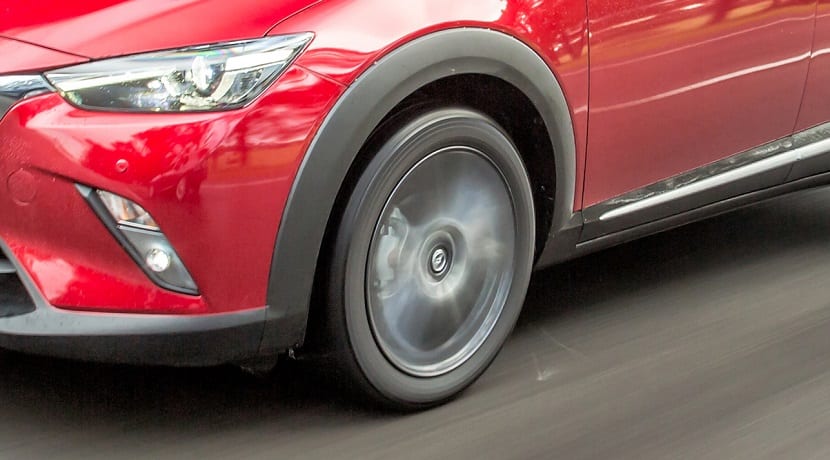
'OUTSIDE' and 'INSIDE'
This is used by the operators who mount the tire on the rim, to know which side goes out of the vehicle. Outside is the outer side and inside inside. Although in some it is not indicated and they must be fixed on the side where the manufacturing date is, which in this case indicates the exterior side.
Images – EveryCarListed P, Dean Hochman, Conor Luddy, Merche Lazaro, Oregon Department of Transportation
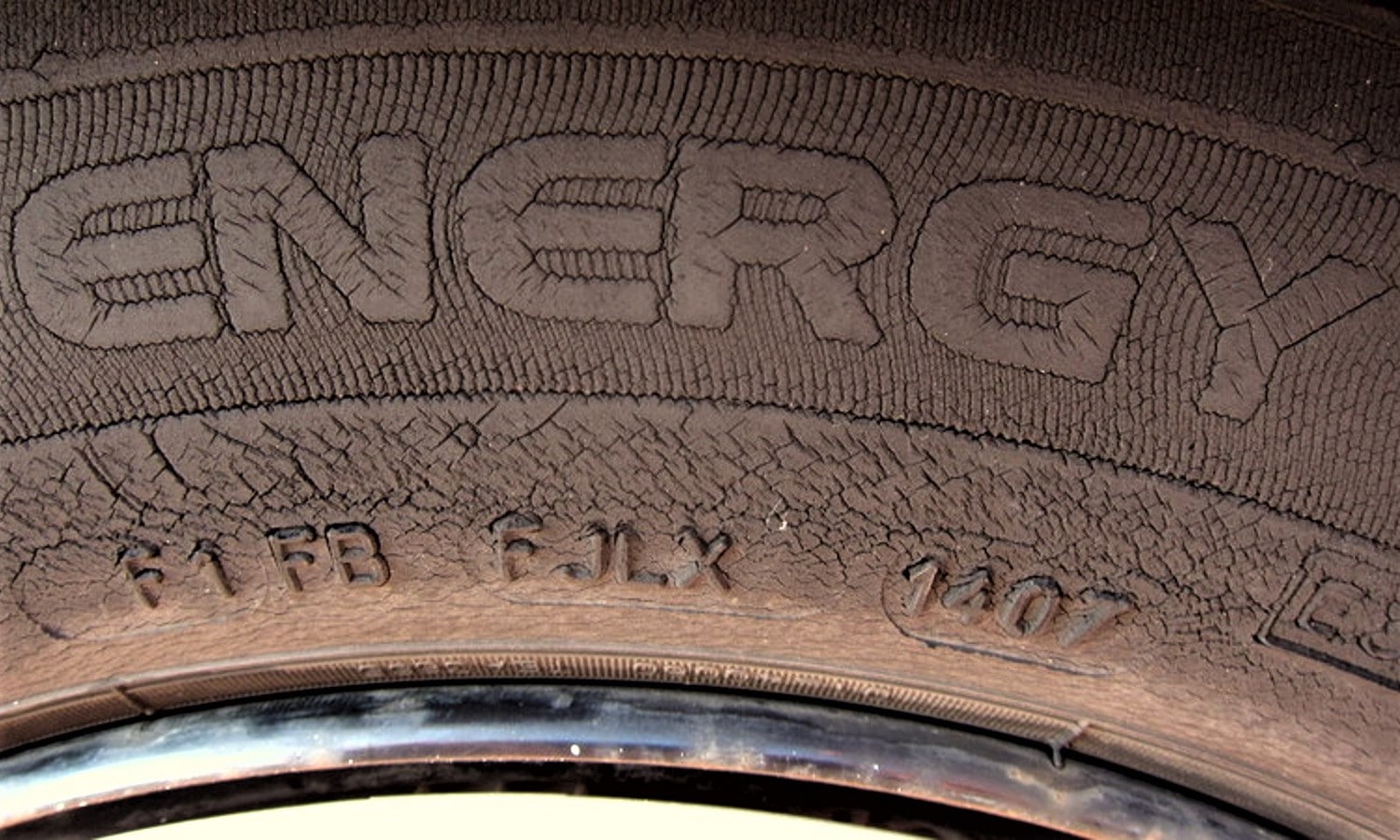
Excellent. I learned new and valuable things, thank you very much.
Good day !!
How many kilograms of load can a 13.6 x 38 tire and a 12.4 x 38 tire support?
They are put on a self-propelled fertilizer machine!
I await your response, Facundo.
widely specified, thank you.